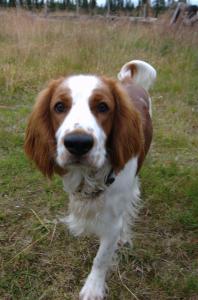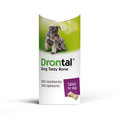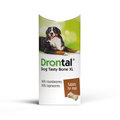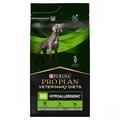Some sure-fire steps and suggestions for ensuring the health and fitness of your dog (whether puppy, adult or senior)...
Several factors can influence the exercise needs of your dog, including its age, breed and state of health. The quality and quantity of exercise needed will vary as your dog ages or experiences periods of weight change or convalescence, so it is important to bear in mind that the exercise needs of your companion are subject to change.
Puppies of any breed require far less exercise than their adult counterparts. First-time owners have a tendency to over-exercise their puppies, which can be detrimental to the health of developing joints. If a puppy is over-exercised it will tire quickly and may be susceptible to early-onset arthritis.
The Kennel Club suggests a suitable ratio of five minutes exercise for every month of age, for example, ten minutes for a puppy that is two months old, fifteen for a puppy that is three months old etc. Observing this basic principle will ensure your dog remains at an optimum state of fitness and health throughout its early stages when it is most vulnerable.
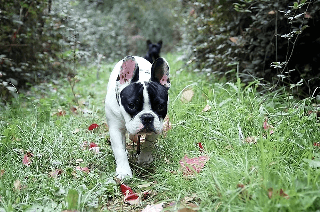 Hip Dysplasia is also more likely to occur in dogs that are vigorously exercised as puppies. High-impact activities that place pressure on joints (i.e. frisbee, jumping, and lots of running) should be avoided in puppyhood and altogether in dyplastic-prone dogs.
Hip Dysplasia is also more likely to occur in dogs that are vigorously exercised as puppies. High-impact activities that place pressure on joints (i.e. frisbee, jumping, and lots of running) should be avoided in puppyhood and altogether in dyplastic-prone dogs.
The exercise needs of adult dogs will differ depending on the breed, with those of working dogs that were primarily bred for herding livestock being greater than the needs of toy breeds, developed as low-maintenance lap dogs. Just as physical exercise is important for fitness, mental stimulation is as important for the well-being of your dog, especially if the breed has a working history.
The Border Collie, for instance, believed to be the most intelligent breed of all, was historically utilised in herding over difficult terrain. The Collie had to remain vigilant to the threat of predators and act quickly to protect its flock, so continues to benefit from both physical and mental enrichment in its daily lifestyle. Border Collies are amongst the most trainable and perceptive of dogs, so teaching them new tricks is an easy, fun, and beneficial way of bonding.
Similarly, traditional guarding breeds such as the Dobermann and German Shepherd - breeds that are still highly valued for their inherent trainability, intelligence and versatility will become bored, frustrated and destructive if they are not mentally stimulated. Simple training in manners, obedience and basic control is a good starting point in enriching your dog.
Active breeds require about 30-60 minutes of exercise every day to stay fit and healthy. Walking times don't just vary across breeds but from dog to dog. The only way to gauge your dog's unique exercise needs is to keep going until he tires! If your dog has slowed down by the time you go home, it's safe to say he's had enough exercise for the day. If, when you get back, he's still charging around inside and climbing the walls, you know you need to exercise him more.
Contrary to popular belief, small and toy dogs do not get enough exercise inside the house. They are more prone to obesity and therefore need a good run around outdoors every few days to stay active and trim. This is necessary whatever the size of your house. Pugs are especially prone to weight gain and are often treated as lap dogs and 'handbag' companions that are rarely exercised. 30 minutes indoor exercise is better than nothing, but it is no substitute for a walk around the block in the fresh air.
If the weather outside is poor, running up and down the stairs (not recommended for dogs with short legs and long backs i.e. Dachshunds, Corgis and Basset Hounds), searching around the house for a hidden toy/treat, and rolling a ball back and forth for your dog to fetch, are good ways of bonding and exercising your small dog inside.
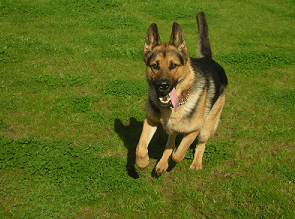 The exercise environment is also critical. Most dogs have a capacity for jumping and climbing, so ensure your garden is well fenced and secured at all times to reduce the risk of your dog escaping. Keeping your canine on a leash in public areas will also minimise the risk, particularly if your dog is a sight or scent hound that is inclined to follow a trail.
The exercise environment is also critical. Most dogs have a capacity for jumping and climbing, so ensure your garden is well fenced and secured at all times to reduce the risk of your dog escaping. Keeping your canine on a leash in public areas will also minimise the risk, particularly if your dog is a sight or scent hound that is inclined to follow a trail.
Whatever means you take to exercise your dog, there is no substitute for socialisation, and the earlier your dog is socialised the better. This means introducing your dog to the sights and sounds of the outside world, and acquainting it with new places and faces to prevent your dog being unduly nervous or aggressive when confronted with change.
Puppy classes are a great way of socialising your dog from a young age and getting it acquainted with other dogs and their humans. Basic training, obedience and manners can also be picked up at these classes without too much work - bonus!
Whether you are the owner of a large working breed or rather fancy yourself a ‘toy’ breed enthusiast, exercise is an essential part of your daily routine and is a key contributor to the well-being of your dog. Whatever the breed, it is important to remember that exercising your dog on a full stomach or directly after a meal is hazardous, with large, deep-chested breeds being prone to bloat and gastric tortion, potentially fatal conditions if left untreated for any length of time.
If you have any comments, please post them below. Feel free to contact me with any further questions and/or suggestions for future blog posts: [email protected]
Written by: Hannah
